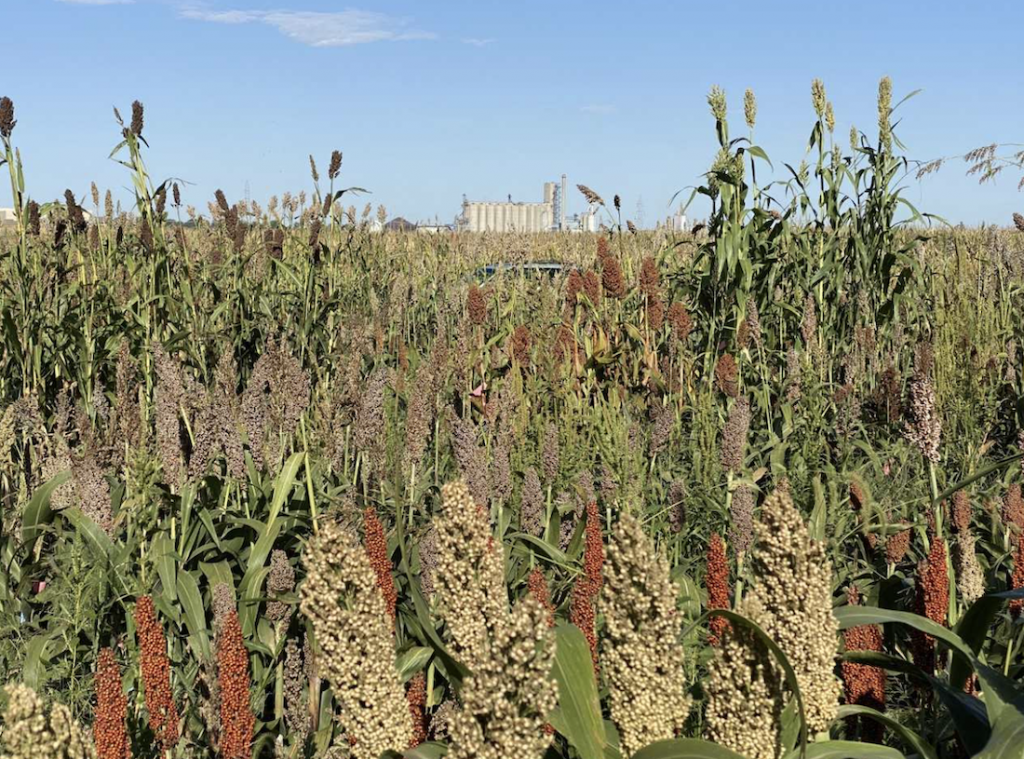Identification of Loci in Sorghum Bicolor That are Associated with Bioactive Molecules Related to Gut Health
There is a growing awareness of the correlation between diet and the gut microbiome and its relationship with disease in humans. In line with this, interest is growing in ways to manipulate the gut microbiome through food. Bioactive molecules, such as complex carbohydrates and fibers, polyphenols, lipids, and seed proteins, influence the composition and function of the gut microbiome. In an effort to understand how plant breeding and genetics can affect the amount of these bioactive molecules in sorghum Yang et al., from the University of Nebraska-Lincoln and the USDA-ARS, evaluated 294 sorghum recombinant inbred lines (RILs) (BTx623 X IS3620C) using automated in vitro microbiome screening (AiMS) to evaluate their interaction with the human gut microbiome of 12 healthy donors. Ten loci correlated with the amount of microbial taxa and/or microbial metabolites. Two of these loci are also associated with regulating the biosynthesis of condensed tannins. The researchers confirmed that the growth of the microbes related to the loci are stimulated by condensed tannins. The genes which are associated with tannin content determine the condensed tannin content in the seed and the tannin in turn functions as a growth medium for specific taxa which compose the gut microbiome. Overall, the study demonstrates that the selection of traits based on their positive effect on the human gut microbiome is possible and worthy of investigation in future crop improvement studies, potentially resulting in a great positive impact on human health.
“We found it striking that colored seed was segregating in the population of RILs since both parents are both light-colored. It was so cool to find the causal alleles for seed color and see the effect of basic Mendelian genetics on characteristics of the plant/seed as well as the human gut microbiome.” – Yang
“The most powerful aspect of the AiMS system is its scalability. You can screen hundreds of lines with the “same” microbiome or test the effect of specific lines of interest across multiple microbiomes. It really isn’t just about tannin or even sorghum. This study highlights how AiMS and existing genetic resource populations of food crop species can be exploited to connect the human gut microbiome. The ultimate goal is to incorporate microbiome traits into crop improvement programs”. – Yang
“I’ve studied the genetic basis of a lot of plant traits in my career. But this study in particular and my work in the Nebraska Food for Health Center in general, is the first time I’ve been able to see genetic variation in our field directly connected to potential human health outcomes. It’s really exciting!” – Schnable
“With the long-term goal of learning how to predictably modulate the human gut microbiome with dietary components, this study moves the needle, demonstrating how genetic analyses in food crops can be used to systematically catalogue pathways and molecules that may eventually be used as substrates for precision microbiome modulation.” – Benson
SorghumBase Examples:
- Sobic.004G280800 (Tan1) encodes a WD40-like protein
- Sobic.002G076600 (Tan2) encodes an b-HLH-like transcription factor
- Sobic.002G273600 is a putative cytochrome P450 associated with synthesis of sesquiterpenes
- Sobic.003G045900 is a putative gibberellin 3-beta-dioxygenase
- Sobic.003G398200 is a abscisic acid insensitive3 (ABI3) transcription factor that modulate gibberellic acid (GA) and abscisic acid (ABA) signaling in seed development
- Sobic.005G098700 is a putative xylanase inhibitor protein precursor

Reference
Yang Q, Van Haute M, Korth N, Sattler SE, Toy J, Rose DJ, Schnable JC, Benson AK. Genetic analysis of seed traits in Sorghum bicolor that affect the human gut microbiome. Nat Commun. 2022 Sep 26;13(1):5641. PMID: 36163368. DOI: 10.1038/s41467-022-33419-1. Read more
Related Project Website:
Nebraska Food for Health Center https://foodforhealth.unl.edu/andy-benson



